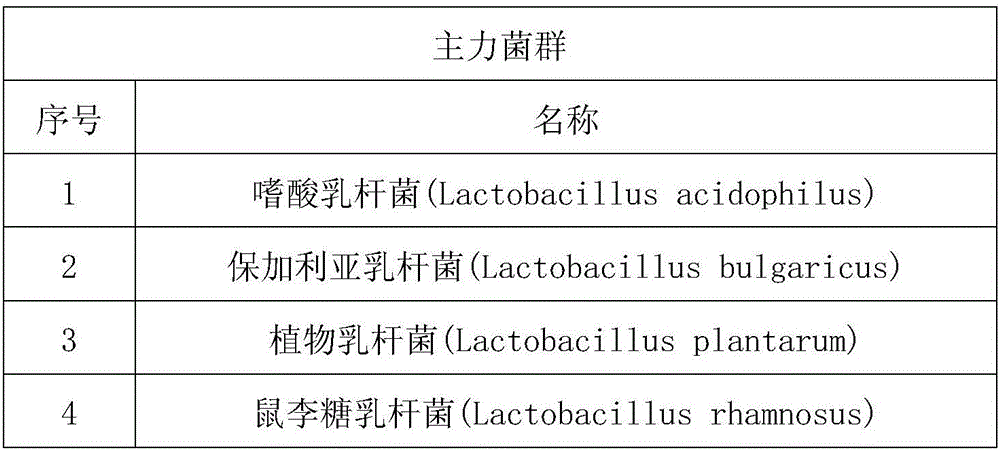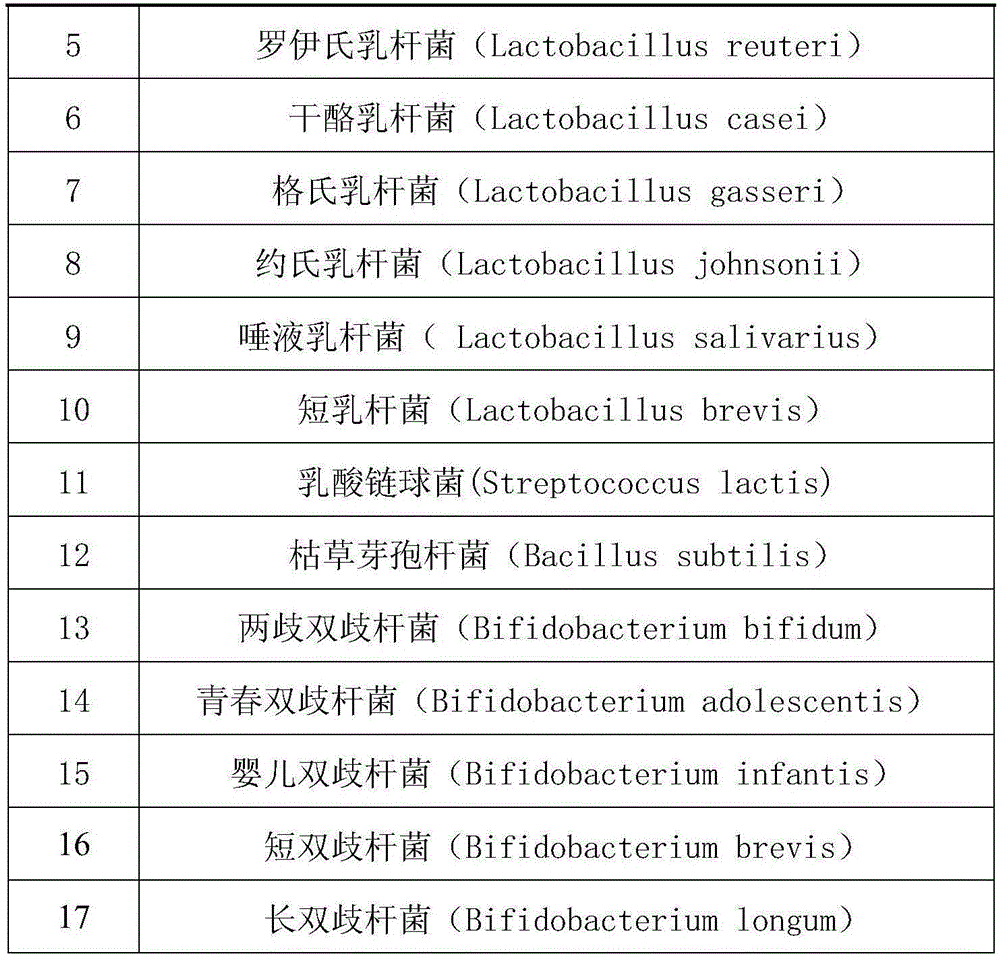Symbiotic microflora enzyme, application thereof and food prepared from symbiotic microflora enzyme
A symbiotic bacteria and enzyme technology, applied in the field of food enzymes, can solve the problems of Helicobacter pylori ineffective, the human body is prone to drug resistance, and the content of probiotics is scarce, so as to improve the immunity of the body and treat intestinal bacteria. The effect of group disorder and enhancement of intestinal permeability
- Summary
- Abstract
- Description
- Claims
- Application Information
AI Technical Summary
Problems solved by technology
Method used
Image
Examples
Embodiment 1
[0047] Preparation of symbiotic flora enzymes
[0048] Step 1, pretreatment of fermented fruit raw materials
[0049] The mass percentage of raw materials is 70% of pineapple, 10% of papaya, 5% of apple, 5% of grape, 5% of kiwi fruit, 3% of king oyster mushroom, and 2% of Hericium erinaceus. For fermentation.
[0050] In step 2, the symbiotic flora is domesticated for three generations, and the acclimatization conditions are set at a pH value of 3-4 and a temperature of 25° C., and cultured in an improved symbiotic flora medium. The composition ratio of the symbiotic flora is 65% of the main flora and 35% of the auxiliary flora.
[0051] The strains included in the main flora are shown in Table 1 above.
[0052] The strains included in the auxiliary flora are shown in Table 2 above.
[0053] Step 3, inoculate the symbiotic flora that has been domesticated for three generations into the fruit pulp to be fermented. The concentration of symbiotic flora after control inoculat...
Embodiment 2
[0059] Preparation of symbiotic flora enzymes
[0060] Step 1, the mass percentage of raw materials is 65% of pineapple, 15% of papaya, 5% of apple, 5% of grape, 5% of kiwi fruit, 3% of Pleurotus eryngii, and 2% of Hericium erinaceus, after cleaning, low-temperature sterilization, and then beating into fruit pulp for fermentation.
[0061] In step 2, the symbiotic flora is domesticated for three generations, and the acclimatization conditions are set at a pH value of 3-4 and a temperature of 30° C., and cultured in an improved symbiotic flora medium. The composition mass percentage of the symbiotic flora is 70% of the main flora and 30% of the auxiliary flora.
[0062] The strains included in the main flora are shown in Table 1 above.
[0063] The strains included in the auxiliary flora are shown in Table 3 below.
[0064] table 3
[0065]
[0066] Step 3, inoculate the symbiotic flora that has been domesticated for three generations into the fruit pulp to be fermented....
Embodiment 3
[0071] Preparation of symbiotic flora enzymes
[0072] Step 1, the mass percentage is 60% of pineapple, 20% of papaya, 5% of apple, 5% of grape, 5% of kiwi fruit, 3% of king oyster mushroom, and 2% of Hericium erinaceus as raw materials, after cleaning, low-temperature sterilization, and then beating It is pulp for fermentation.
[0073] In step 2, the symbiotic flora is domesticated for three generations, and the acclimatization conditions are set at a pH value of 3-4 and a temperature of 28° C., and cultured in an improved symbiotic flora medium. The composition mass percentage of the symbiotic flora is 60% of the main flora and 40% of the auxiliary flora.
[0074] The strains of the main flora include the above Table 1.
[0075] See Table 4 below for the bacterial species of the auxiliary flora.
[0076] Table 4
[0077]
[0078]
[0079] Step 3, inoculate the symbiotic flora that has been domesticated for three generations into the fruit pulp to be fermented. Th...
PUM
 Login to View More
Login to View More Abstract
Description
Claims
Application Information
 Login to View More
Login to View More - R&D
- Intellectual Property
- Life Sciences
- Materials
- Tech Scout
- Unparalleled Data Quality
- Higher Quality Content
- 60% Fewer Hallucinations
Browse by: Latest US Patents, China's latest patents, Technical Efficacy Thesaurus, Application Domain, Technology Topic, Popular Technical Reports.
© 2025 PatSnap. All rights reserved.Legal|Privacy policy|Modern Slavery Act Transparency Statement|Sitemap|About US| Contact US: help@patsnap.com



